Musings
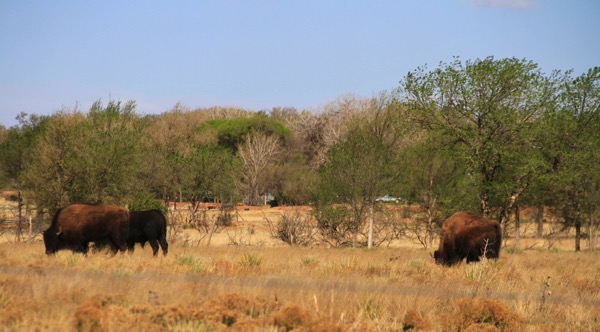
I haven’t mentioned wild critters so far. On day one we saw a beaver crossing the road. Pretty sure on that ID, and definitely on the location. Strange. On day two, we spotted antelopes. Not many, but they were out there in the windswept terrain. Today, we just moseyed along pretty early, and whoops, look in with those cattle…odd shapes…yup, two bison. I don’t think we will do better tomorrow and the coming days…unless…elk?
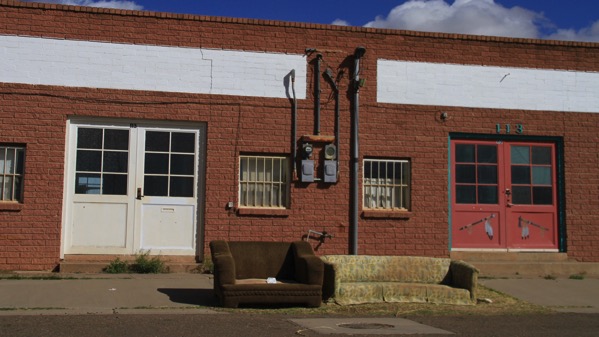
Off in a nearly abandoned part of town, we found this pair of couches perhaps commiserating on the lousy neighborhood…or waiting for a parade?

For lunch we found a real Mexican place. I had a red and a green tamale. With a side of beans. I was stuffed. The two sauces provided were both cooked, so a real contrast to yesterday’s salsa offerings.
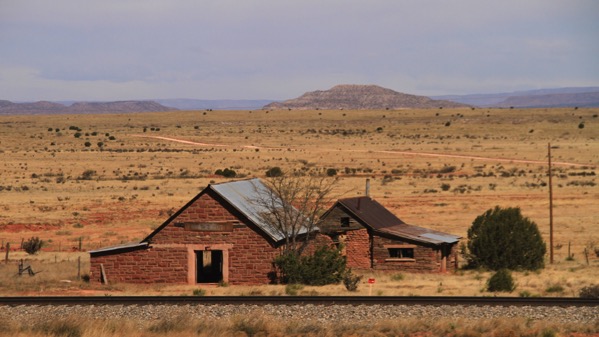
The Guru made this shot, a real grab of an abandoned ranch with a butte not far distant (I was driving; foot’s doing quite well, thank you). The sign says “Baptist Church.” Life after ranch.
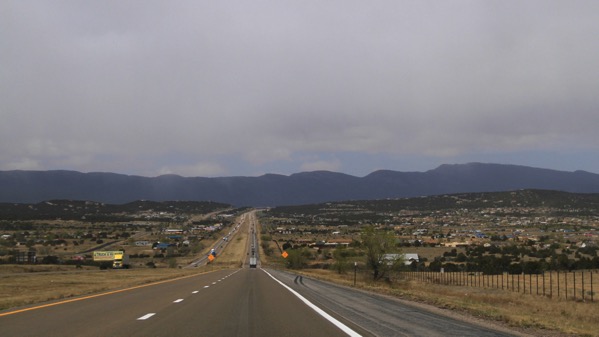
That line of mountains in the distance, that’s the east side of the Sandia Mountains, which are the east side of the Albuquerque basin. There’s a road to the top, very winding and slow; it passes a ski area and a parking lot signed winter play area. We took that road. It hammered our mileage even worse than the winds and gentle upgrade have over the last two days.

The vegetation at the top was rimed in a snow-ice combo. The wind was fierce. We made a quick walking loop, clicked a few frames, and scuttled back to the quiet of the car. And warmth; the car indicated it was 22°F outside. [Remember, we were in 104 yesterday.]
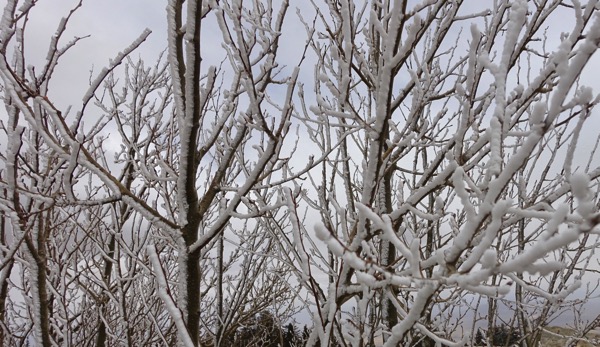
The rime was pretty thick, and one sided. The wind was strong enough to blow pieces off and we could see small white bombs scattered on the blacktop.
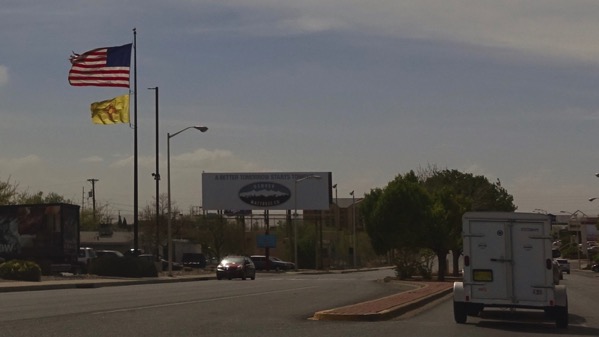
We headed down, garnering all the battery-energy we could. The battery level went from below zero (zero on the gauge not being empty but false empty that keeps a bit of charge in the battery at all times), to 59%. Now, that’s a downhill!
And in ABQ: yup, still windy. Supposed to slack off in the evening. Can’t wait!
Posted at 9:41 PM |
2 Comments »

Today we left causeway-world. But not before we did important things.
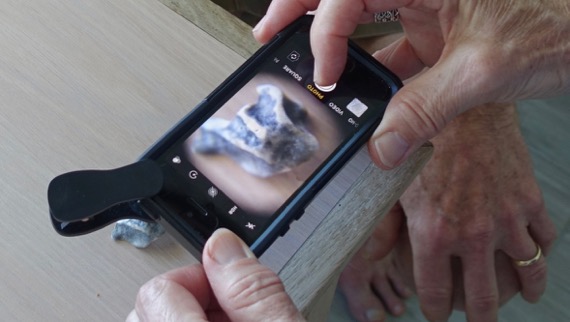
Like playing with the macro lens.
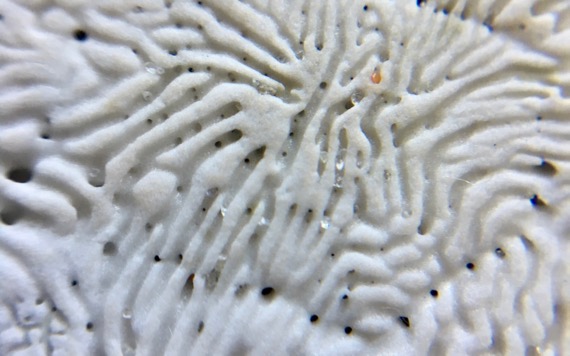
Including looking at an eroded sand dollar, complete with sand grains.
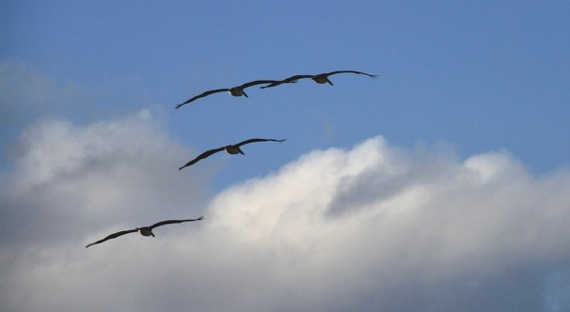
We watched birds, including the cruising small-packs of pelicans.
There was of course lots of laughing and some tale-telling. We read, we relaxed. Life was darned pleasant.

Just as we were organizing ourselves in the parking lot to depart, a rainbow section emerged.
Sigh. And now the salt-water coast is behind us.
Posted at 11:17 PM |
Comments Off on Bittersweet ultimate
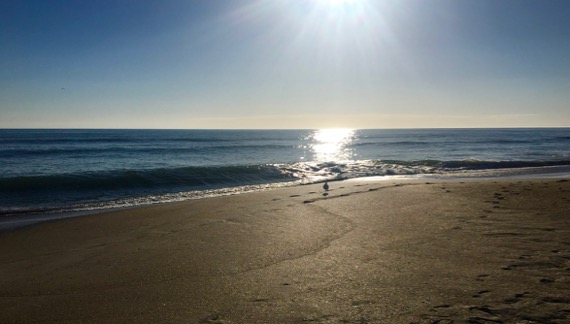
We spent the day on and (mostly) near the beach. We got out early to enjoy that low-angle light, and it’s a good thing—already almost HOT by 8:30 am!
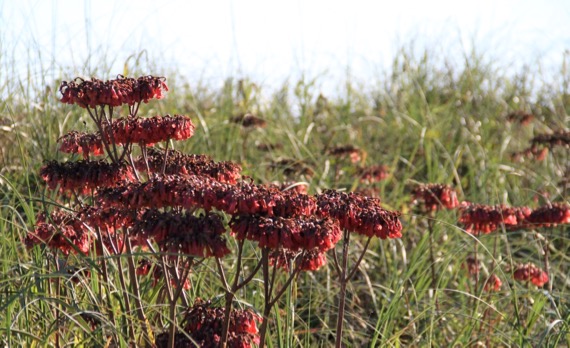
Circling in the car behind the dunes traveling from one place to another, we found these large bloom clusters; I have no idea what they are.
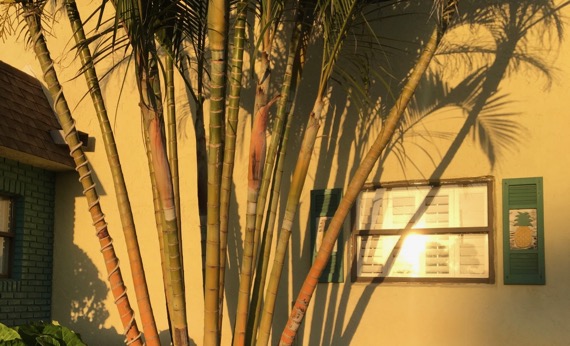
Late in the day, we found this lovely juxtaposition of light and shadow, shapes and colors.

On a late-day beach wander, we found this sea-denizen, or its fading carcass. Such striking, amazing colors!
Posted at 9:56 PM |
2 Comments »

This story-of-the-day’s-walk is self explanatory and has no plot: Look! A Dekay’s brown snake! Right there!
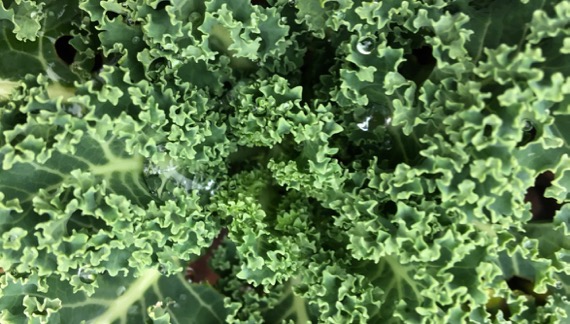
The other story takes longer to write although I took it in in about three glances. I have no picture* for it—too scary-sad for my personal taste. We were walking down a side street—no traffic, and the road was smoother than the sidewalks. And I saw up ahead lots of small pieces of broken, rotten branches. I said, oooooh, I’m not walking right there; looks like that tree is shedding! Then I realized that the small black car parked along the curb had four star-breaks in the windshield—thankfully, not broken all the way. But.
* In the kale-substitute photo, I quite how the droplets are lensing the sky above….
Posted at 6:58 PM |
Comments Off on No moguls here

We loaded up and when The Guru fired up the beastie (complete with a full electrical charge (yay!)), it gave us this temp. Time to head south, we agreed. It even dropped another degree by the time we crossed the Potomac one last time east of Harpers Ferry. The water sparkled in the sun; we were southbound; life is good, we also agreed.
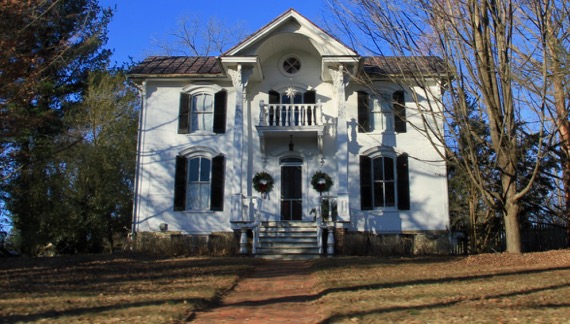
The landscape was mostly open and we saw a few “fancy” houses. I tried not to think about the ugly history of slavery in this former(?) tobacco-farming region. (We saw very few (surviving?) tobacco barns, unlike this latitude on our northbound leg.)
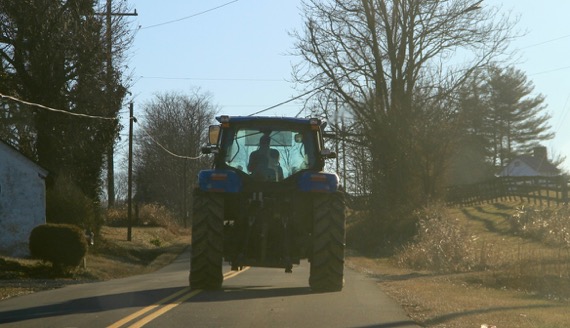
It was Sunday and perhaps that is partly why this was the only active farm vehicle we saw….
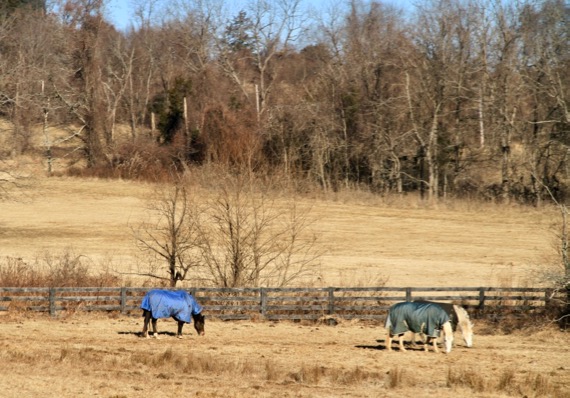
All the horses I remember seeing on the many mini-farms had lovely jackets. I don’t think they’re anything like the old-fashioned “horse blankets.” I suspect these are high-tech and perhaps even Goretex.

I loved the low sun angle at this, our last rest area of the journey.
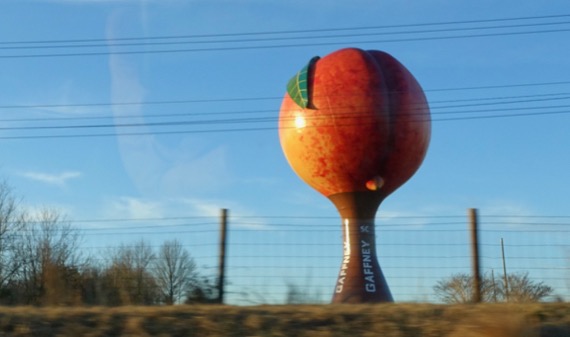
Proof that home is not far ahead…the Gaffney peach. And attendant power lines….
Such a great trip; such a diversity of experiences! We especially enjoyed last night’s socializing with our friends from Venezuela* (presently in northern Maryland). Still smiling!
* And, yes, the terrible things you have heard about people starving to death, lack/absence of medicines (including for malaria), and brutality by…well, you get the idea of what’s happening in Venezuela…yes, what you’ve heard: true, true, true. Soooo, so sad. We are glad they are safe. For now….
Posted at 9:14 PM |
Comments Off on Winter tour concludes
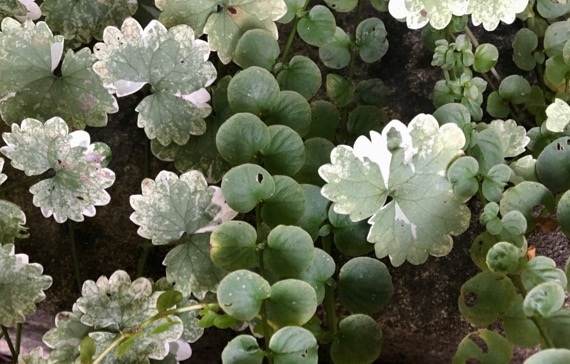
We went for a wee walk this morning, and I thought maybe I’d capture a vegetation picture for this space…

…or maybe autumn fleurs.
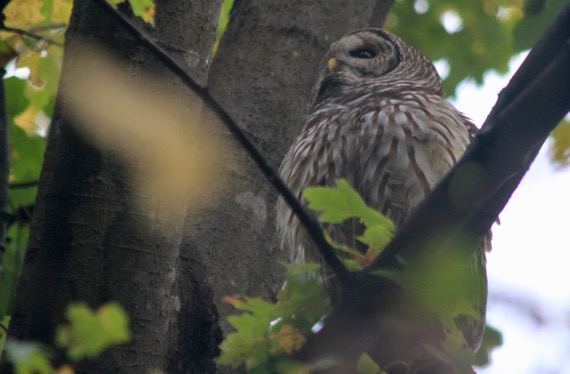
Then, in the afternoon, the sharp-eyed Guru noticed a big bird swoop into the back yard…and got out the big lens…and gave me this super barred owl shot that I am passing along. Crappy light, yet lovely feather patterns, ¿no?
Posted at 10:13 PM |
2 Comments »

I’m thinking this flower/weed is butterweed/cressleaf groundsel, or a closely related species.
We got out for a short loop, the Guru, me, crutches and The Boot. We decided not to push it and so didn’t go terribly far (no record setting today!), and somehow the Fitbit even deigned to give me a massive nine active minutes.
The bonus on our walk was that when I spotted this bumbler s/he was on a lower flower, and then flew up to this cluster, where I could actually reach down to photograph her/him.
And not drop a crutch.
Posted at 7:34 PM |
Comments Off on Busy, big bumbler

We made a bold decision: to go for a Sunday drive! In the Prius! Since The Event, we have been using the Venerable, with the bench rear seat that allows me to elevate the foot easily. Today, we explored (heh) our options.
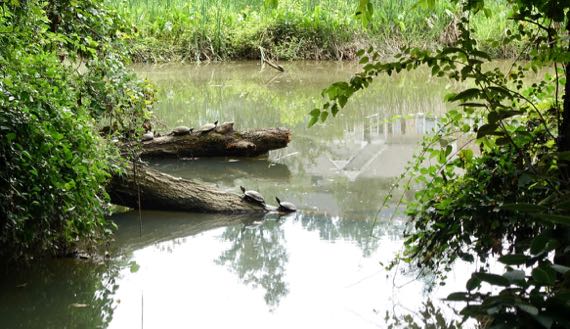
Among our wanders, we had a fun, quick visit with my FIL, then turned downhill and found posing urban turtles!
Summary: a great experience!
Posted at 6:33 PM |
Comments Off on Out, about
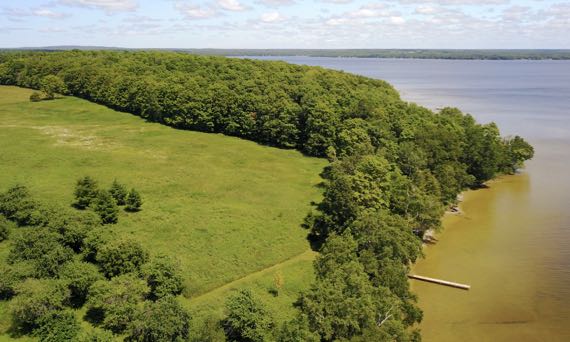
The sun finally (finally!!) came out about noon, and things began to dry out and seem normal. So normal that The Guru sent the drone up. Look at the Beaut/Beast, the new dock!
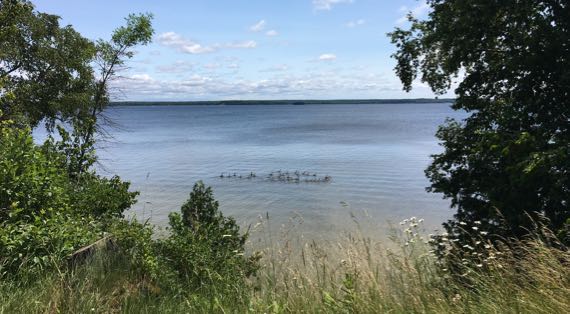
Later, I was walking toward the beach, and had this great view of the lake…and denizens! Whatta crop of Canadas this year! Reproductive success! Not that the populations are endangered or anything, but call it like it is…. And a few steps later, I thought, uh oh.
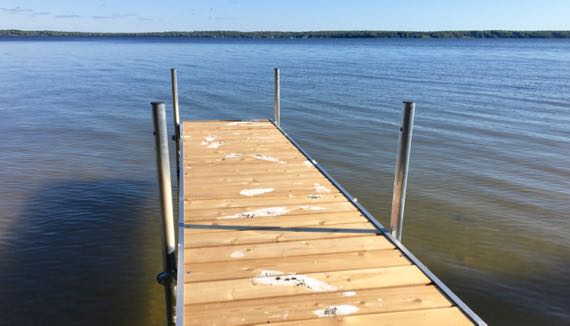
Sure enough, the Canada-gang had tagged the New Dock big time. Yipes. Not holding anything back, “one” might say.
If I had more time, I’d work on a monofilament “fence” to protect the dock….
Be happy, I thought about calling this “Fouled by fowl.”
Posted at 8:28 PM |
Comments Off on UP saga
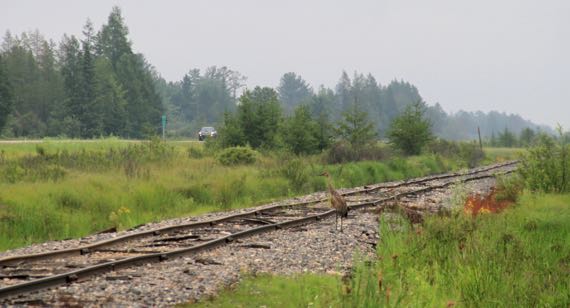
Big birds. A pair of sandhill cranes inspect wavy railroad tracks.

Small bird. Pretty sure it’s a spruce grouse. Eat many pine needles. Interesting choice.
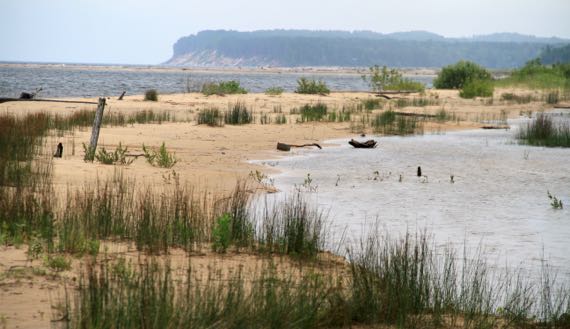
Here’s the east side of West Bay, which I call Grand Marais Bay in my head. From ground level.
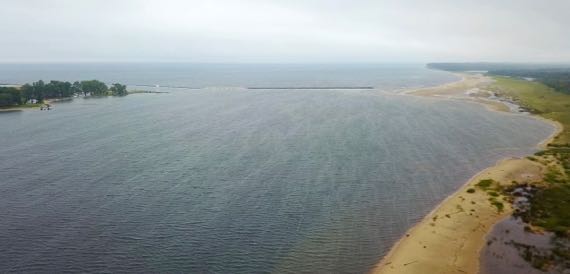
Here’s approximately the same direction/angle from Droney. In spite of some serious wind. Tough drone!
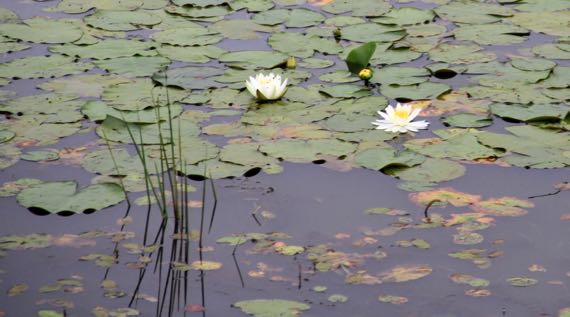
On the ground, the water-topping flowers are in full display.
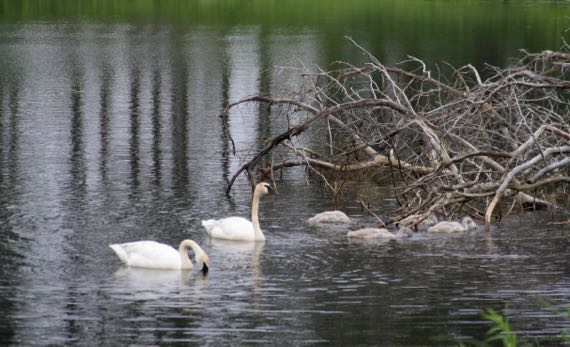
And we found a swan family—four cygnets!—browsing.
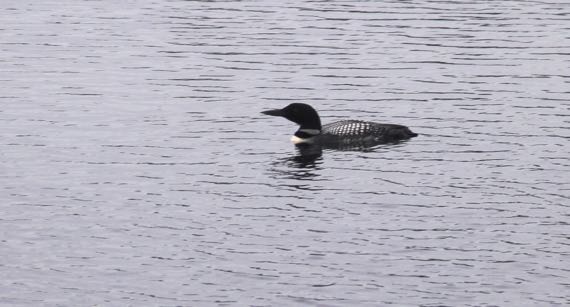
And a solo loon…posing…or watching us back.
Posted at 6:15 PM |
Comments Off on Big n small variants








































